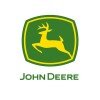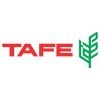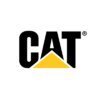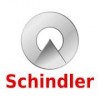Filter interviews by
Medha Traction Equipment Interview Questions and Answers
Medha Traction Equipment Interview Experiences
2 interviews found
I applied via Referral and was interviewed before Aug 2022. There were 3 interview rounds.

(1 Question)
- Q1. Basic mechanical engineering questions on all the subjects.
(1 Question)
- Q1. This is also same as round one with General manager.
Interview Preparation Tips
I applied via Campus Placement and was interviewed in May 2021. There were 4 interview rounds.
Interview Questionnaire
1 Question
- Q1. About machines, transformers, RLC circuits
Interview Preparation Tips
Top trending discussions






Interview questions from similar companies

I applied via Naukri.com and was interviewed before May 2020. There was 1 interview round.
Interview Questionnaire
1 Question
- Q1. Write the equation for dynamics and wave spectra equations. I do not remember questions as it is 3 years back.
Interview Preparation Tips

Senior Engineer Interview Questions & Answers
Sigma Electric Manufacturing Corporationposted on 10 May 2018
I applied via Company Website and was interviewed in Jan 2018. There were 2 interview rounds.
Interview Preparation Tips
Experience: technical round
no. of questions 30
Round: Test
Experience: Questions related to NPD
no. of questions 10
Round: Test
Experience: VP Round
all questions reated to job 10
Round: Test
Experience: HR round ..
General Tips: Know the JD before interview
Skills: Communication, Body Language, Decision Making Skills
Duration: 1-4 weeks

I applied via Campus Placement and was interviewed before Feb 2021. There were 2 interview rounds.
Quant , Logical REASONING , Java
(3 Questions)
- Q1. Why should we hire you?
- Ans.
I bring a unique blend of technical skills, problem-solving abilities, and a passion for innovation that aligns with your team's goals.
Strong proficiency in programming languages like Python and Java, demonstrated through successful projects such as a web application for task management.
Experience in collaborating with cross-functional teams, as seen in my role at XYZ Corp where I led a team to improve software deploym...
- Q2. What is your family background?
- Q3. Tell me about yourself.
Interview Preparation Tips

I applied via Recruitment Consultant and was interviewed in Mar 2020. There were 4 interview rounds.
Interview Questionnaire
1 Question
- Q1. Questions were related to the post John Deere were offering to candidates. For me it was Diagnostics Author position.
Interview Preparation Tips
If you don't know the answer don't try to attempt simply say that you don't know and assure interviewer that if you ll get a chance you will definitely answer that.
Be optimistic and attentive.

I applied via Walk-in and was interviewed before Apr 2021. There was 1 interview round.
(1 Question)
- Q1. Explain Compilation process steps?
- Ans.
Compilation process involves several steps to convert source code into executable code.
Preprocessing: Includes header file inclusion, macro expansion, and conditional compilation.
Compilation: Translates source code into assembly code.
Assembly: Converts assembly code into machine code.
Linking: Combines object files and libraries to create an executable file.
Loading: Loads the executable file into memory and prepares it ...
Interview Preparation Tips

I applied via Referral and was interviewed before Jul 2021. There were 3 interview rounds.

Quantitative Aptitude, Numerical Ability, Synonym etc
(1 Question)
- Q1. Introduce yourself Where you did Training? What was your academic project? Guide? What do you like? Tractor or Implement? What is your aim?
Interview Preparation Tips

Interview Questionnaire
2 Questions
- Q1. Sales & marketing Question
- Q2. How will you increase your dealer sales?
- Ans.
I will increase dealer sales by implementing targeted marketing strategies and providing exceptional customer service.
Conduct market research to identify potential customers and their needs
Develop targeted marketing campaigns to reach those customers
Provide exceptional customer service to build loyalty and encourage repeat business
Offer promotions and incentives to attract new customers and retain existing ones
Train an...

I applied via Recruitment Consulltant and was interviewed in Sep 2021. There were 2 interview rounds.
(1 Question)
- Q1. Basics of C, embedded C, microcontrollers and RTOS
(1 Question)
- Q1. Share details of your previous job.
Interview Preparation Tips
Medha Traction Equipment Interview FAQs
Tell us how to improve this page.
Interview Questions for Popular Designations
- Associate Interview Questions
- Software Engineer Interview Questions
- Senior Associate Interview Questions
- Senior Engineer Interview Questions
- Sales Executive Interview Questions
- Associate Software Engineer Interview Questions
- Accountant Interview Questions
- System Engineer Interview Questions
- Show more
Overall Interview Experience Rating
based on 2 interview experiences
Difficulty level
Duration
Interview Questions from Similar Companies
Medha Traction Equipment Reviews and Ratings
based on 34 reviews
Rating in categories
|
Technician
9
salaries
| ₹2 L/yr - ₹3.6 L/yr |
|
Senior Engineer
7
salaries
| ₹5 L/yr - ₹12 L/yr |
|
Technical Assistant
7
salaries
| ₹1.6 L/yr - ₹4 L/yr |
|
Purchase Engineer
7
salaries
| ₹2.6 L/yr - ₹7 L/yr |
|
Electrical Engineer
5
salaries
| ₹3.3 L/yr - ₹7.9 L/yr |

John Deere

Tractors and Farm Equipment

KONE

Caterpillar Inc
- Home >
- Interviews >
- Medha Traction Equipment Interview Questions











